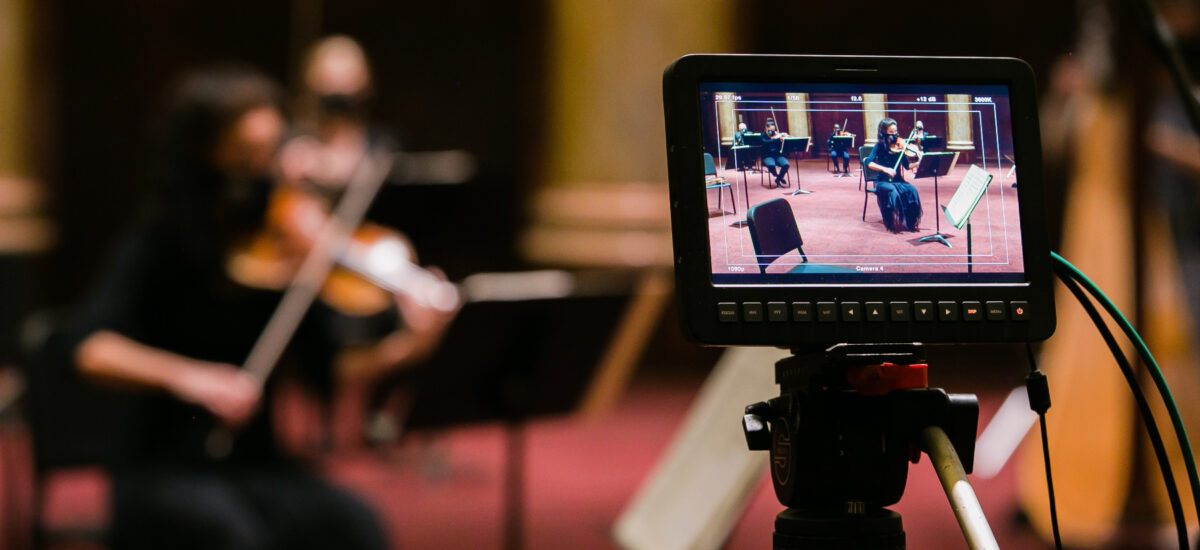
Take Action: Electronic Media Policy
In This SectionOrchestras and other performing artists and presenters have used wireless microphones to provide unrestricted on-stage movement and to deliver clear and accurate sound to appreciative audiences. Wireless systems operating on radio frequencies between TV broadcast channels are also used for backstage communications with stagehands to execute complex technical activity. Interference to these communications could compromise the safety of performers, technicians, and audiences.
Also, the distribution of media is a critical component in how orchestras bring the experience of music to audiences near and far. While tours and residencies enable orchestras to bring the in-person experience of music to audiences, public broadcasting provides the largest stage, and in many rural areas, public broadcasting is the only provider of free, locally managed news, arts, and cultural programming.
Contacting Congress is simple and will make a difference. We have prepared an advocacy campaign with essential background, talking points, and a template letter for you to personalize your communication with policymakers.
Take Action: Public Broadcasting
Support Public Broadcasting
- View Issue Brief (PDF)
KEY DEVELOPMENTS
- League Comments on ASCAP/BMI Consent Decree Review – August 9, 2019 (PDF)
- League Weighs in as DoJ Reviews ASCAP/BMI Consent Decrees – March 6, 2019 (PDF)
- League joins Comments to FCC Supporting Expansion of License Eligibility – October 2, 2017 (PDF)
- League joins 170 Organizations Urging FCC to Protect Open Internet – March 7, 2017 (PDF)
- League Signs Joint Comments Expressing Concern to FCC about Protecting Wireless Microphone Technology – July 14, 2015 (PDF)
- League Signs Joint Comments to FCC Urging Protection for Wireless Mic Operations – February 3, 2015 (PDF)
- League Signs Joint Comments to FCC Supporting Open Internet – July 15, 2014 (PDF)
- U.S. House Members Urge FCC to Preserve Dedicated Channels for Wireless Mics – October 28, 2013 (PDF)
- League Files Joint Comments for Protected Wireless Microphone Use in Future Spectrum Auction– January 25, 2013 (PDF)
- PAA Urges Payroll Tax Conferees to Protect Nonprofit Performing Arts in Possible Spectrum Reallocation (PDF)
- Performing Arts Alliance Asks Congress to Protect Federal Funding for Non-Commercial Radio – March 8, 2011 (PDF)
- League Files Joint Comments to FCC Regarding Wireless Protection and Licensing Eligibility – May 19, 2010 (PDF)
- Performing Arts Alliance Voices Support to FCC of Preserving an Open Internet – April 26, 2010 (PDF)
- Performing Arts Alliance Urges FCC to Protect Nonprofit Arts Wireless Microphone Use – March 22, 2010 (PDF)
Banner: Members of the Des Moines Symphony perform “History & Folklore,” the first concert in its livestreamed “Live from the Temple” series, at the Temple for Performing Arts in downtown Des Moines, Iowa. Photo: Minda Davison
In This Section
Become a member
Thank you for your interest in the League of American Orchestras! We are dedicated to advancing the orchestral experience for all.
Join Now